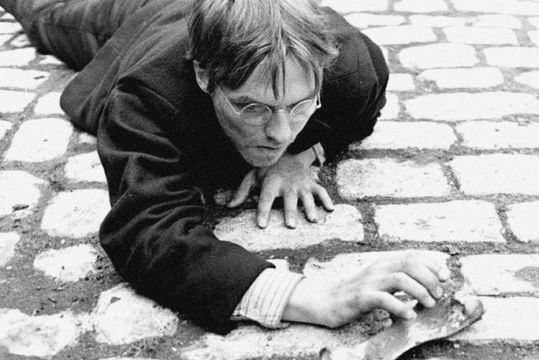Synopsis
""Just because one is a sensitive kind of person doesn't mean one is mad."
Henning Carlsen's adaptation of
Knut Hamsun's novel,
Hunger, captures a meek man (
Per Oscarsson) and his insatiable search for sustenance and hope through the lifeless streets of Christiania (old Oslo). Like the tone and tenets of
neorealism which probed into the harsh social realities of a war-scarred Italy,
Hunger focuses on how intense starvation influences a man's experience of reality. The camera becomes an eye for the way that
hunger manifests itself in this Christiania man. The architecture reveals his famished state: stark buildings, barren water-stained apartment walls, empty streets, leafless trees, eerie grey skies. Unlike
neorealism, however, the 1966 production uses dreams and "mindscreen" to seize the character's emotion-charged soul-searching and heighten his imagination and intellectual inquiry. This is not
hunger like that of a dog; it's a spiritual lack, a quest for the substance of life. At one point, the protagonist regurgitates the raw meat scrapings from a bone fit for a dog and exclaims: "Damnation! Is there nothing one can keep for oneself?"
Per Oscarsson punctuates each line with brilliant delivery and makes the desperation of
Hunger immediate." –
Gustavo Lamanna

